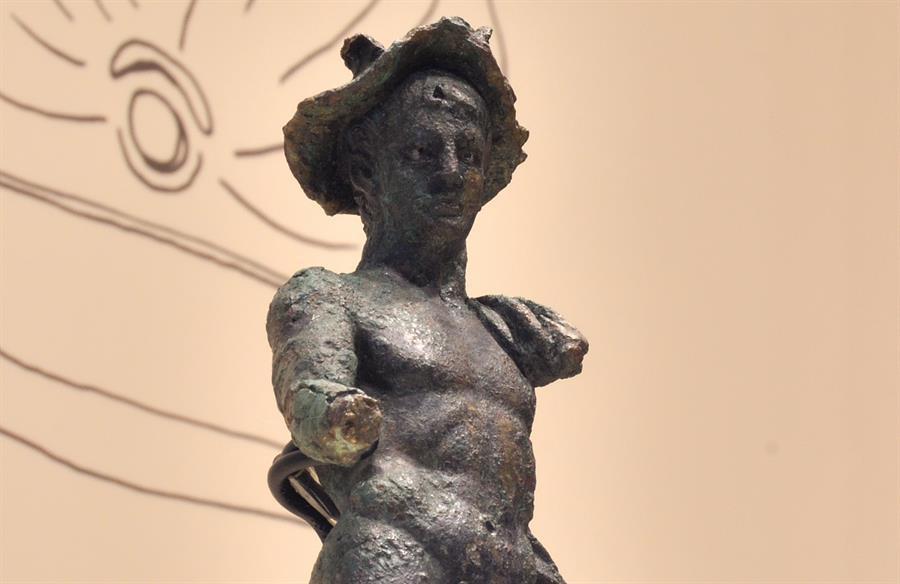
A Hermes statuette, discovered by a farmer in the Central Anatolian province of Çorum and later delivered to the Çorum Museum, is one of the key assets of the museums, drawing tourist interest considerably due to its craftsmanship and the story behind it.
The Hermes statuette, one of the most precious and rare artifacts exhibited in the museum, was included in the cultural inventory after it was discovered accidentally in a village in 2017 by a farmer while plowing his field and was later handed over to the museum.
The artifact, which is on display with various statuettes in a special showcase on the third floor of the Çorum Museum, draws attention with its high-level craftsmanship and distinctive details, although it lost some parts before it was discovered.
Approximately 2,300-year-old and estimated to have been made of bronze with a molding technique between 323 B.C. and 146 B.C., the figurine throws light on the region’s archaeological wealth.
Speaking to the state-run Anadolu Agency, Resul İbiş, an archaeologist of the Çorum Museum, said that the statuette was a rare artifact made in an unprecedented style in the region.
“Far from the provincial style we are used to seeing in the region, the artifact was shaped with great skill as if it came out of the hands of an artist like Athenian sculptor Praxiteles, who lived in the fourth century B.C.,” he said, adding that this type of young Hellenistic bronze figurines were also found during excavations in the Pergamum Acropolis (Bergama).
Noting that Hermes is depicted with his winged sandals in the statue, İbiş said: “In the statuette, quite elegant body lines, muscles, cloak and waves of hair are seen in detail. The white and pupils of his eyes were defined, and the pensive expression on his face was successfully reflected. Hermes is among the respected gods in the region, and these artifacts provide important data for scientific studies to be conducted.”
Noting that Hermes is one of the most depicted gods according to archaeological sources, İbiş said: “The first feature of Hermes, the son of Zeus and Maia in the Greek mythology, is that he is the god of fertility of shepherds and animals. At the same time, he is mentioned in the Homeric epics as the messenger of gods and the reliable messenger of his father, Zeus. One of the 12 great Olympian gods, Hermes, who was the only god who won immortality by contract, is distinguished from the others with his cunning and skillfulness from birth.”
İbiş emphasized that, according to mythological records, Hermes is also known as the “god of the roads and passengers” because of his rapid change of place to bring news from one place to another.
“It is natural that Hermes is the god of commerce, merchants and thieves, considering that travel was done with the purpose of trading rather than traveling in ancient times. He is skillful, well-spoken and able to persuade others. Hermes transmits Zeus’ commands to mortals and gods. Wearing winged sandals and headgear, Hermes carries a staff and a money bag in his hand. He is the god of speakers, herds, trickery and thieves because he speaks charmingly and convincingly. He protects the roads, passengers and merchants. He takes the souls of the deceased to Hades, the god of the underworld. It is his duty to bring sleep and dreams sent by Zeus to people,” he said.
The statuette is of great interest of particularly those people who have knowledge of mythology, he added.